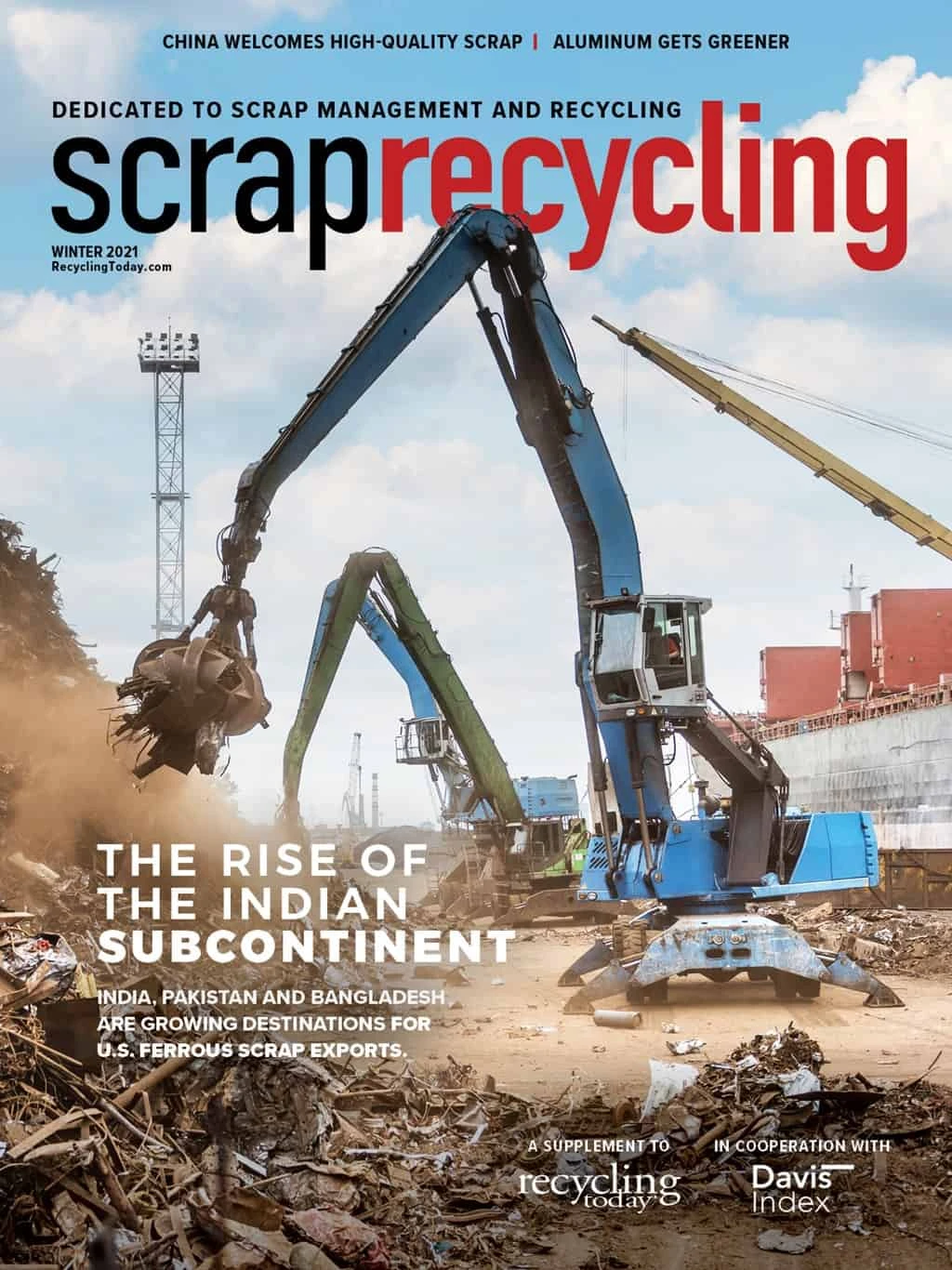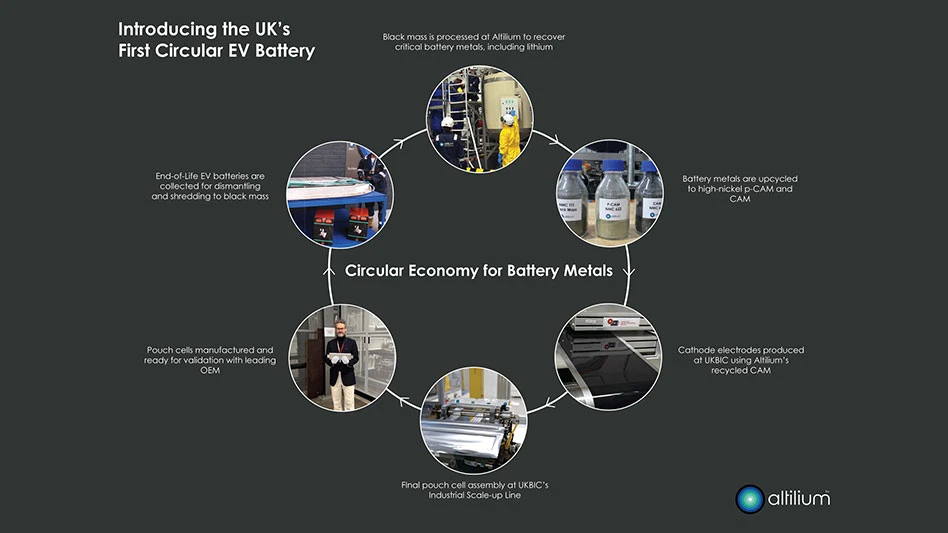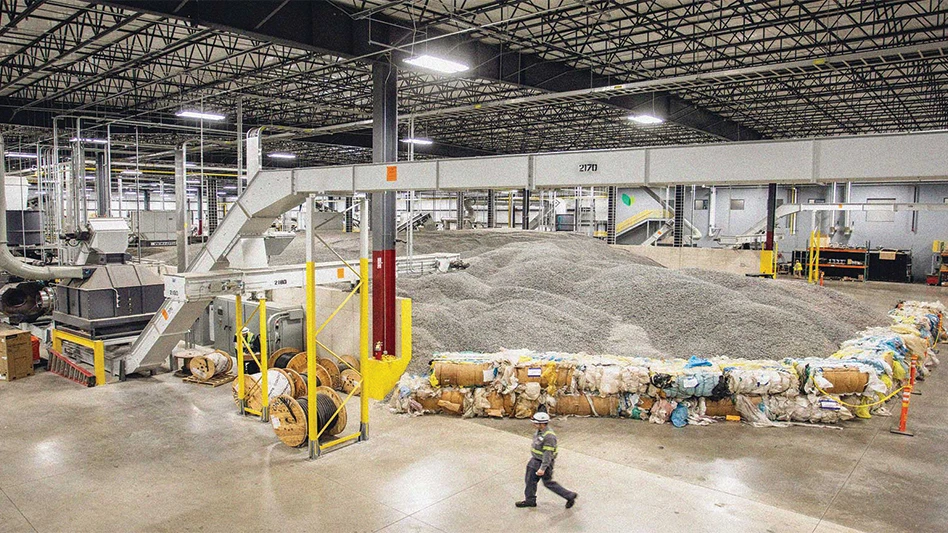Demand for aluminum has risen steadily over recent years and is predicted to increase further over the next two decades, with the automotive and construction industries likely to remain major end users of this highly versatile metal.
In the automotive industry, the need to lightweight vehicles is driving up demand for aluminum, in particular wrought aluminum alloys for use in electric vehicles as the industry shifts away from internal combustion engines that use cast alloys.
In Europe, the continent’s construction industry is under growing pressure to reduce its CO2 emissions and become more energy efficient. Therefore, demand for aluminum also is likely to rise because it is a lightweight, energy-efficient and infinitely recyclable material.
We’ve already witnessed European plastics manufacturers committing to increase the amount of recycled content in their products to reduce their carbon footprints, and now we’re seeing the same thing happen in the aluminum industry. Aluminum producers are marketing high-recycled-content aluminum to demonstrate their environmental credentials and their commitment to reducing CO2 emissions. (See “Aluminum charts a green course” in this issue.)
To meet the demand for high-quality recycled aluminum, the challenge for scrap metal processors, along with the growing number of aluminum producers that are investing in equipment to sort scrap themselves, is how to produce a consistently high-quality, high-purity furnace-ready aluminum product. To achieve this and to optimize the use of scrap in their furnaces, the infeed material needs to be cleaned of heavy metals, aluminum-plastic compounds and other light material, such as magnesium. Being able to rely on a repeatable-quality furnace material is key for the aluminum industry.

Targeting contaminants
One of the major sources of aluminum scrap is zorba, a mixed nonferrous material generated by passing shredded end-of-life vehicles, appliances and electronics under eddy-current separators. Zorba consists primarily of aluminum (typically 70 percent to 80 percent) and other nonferrous metals, such as copper, brass, zinc and magnesium.
Additionally, zorba can contain nonmetallic contaminants, such as rubber and plastics. In Europe, magnesium makes up from 1 percent to 2 percent of a typical aluminum scrap fraction and is regarded as an unwanted contaminant in the scrap mix, whereas the United States generates an estimated 4 million tons of zorba annually, which typically contains from 2 percent to 4 percent magnesium.
Similarly, the increasing volume of aluminum-plastic compounds and other plastics and nonmetallic materials in zorba can make it difficult for processors to produce high-purity aluminum scrap. Historically, the magnesium and the aluminum-plastic compounds would end up in the aluminum fraction, reducing the quality of the aluminum product and, subsequently, reducing its market value.
Until two years ago, processors could sell this lower quality material to China, but since China closed its borders to this material, it has become increasingly difficult to sell zorba that has not been cleaned. Consequently, a surplus of zorba exists in Europe and the United States. With an excess amount of zorba sitting in yards across Europe and the U.S., the issue of quality becomes even more significant. Selling the material without cleaning it simply isn’t a sustainable solution, especially if processors want to get a good price for the material. Only those recyclers who can process the material and recover a consistently high-quality aluminum product will be able to sell it to end customers in domestic markets.
Because magnesium and aluminum are similar in density, traditional sink-float dense media plants can struggle to clearly differentiate between these materials to separate them and remove contaminants. The aluminum recovered using a sink-float separation process risks being unable to meet the quality standards required by end customers, and, as a result, processors could face penalties for supplying an inferior quality product.

Making the most of technology
Removing aluminum-plastic compounds, light plastics and magnesium from aluminum scrap requires advanced sorting technology. One such technology that addresses this challenge and offers a reliable, robust and cost-effective alternative to sink-float separation is the latest application Tomra Sorting has developed for its X-Tract unit.
During test center and in-field testing, Tomra put hundreds of metric tons of sorted and traded material through the X-Tract unit with the belt running at 10 feet (3 meters) per second and achieved consistently high purity rates of up to 99 percent. This means the material can be traded more robustly and used in domestic or close-to-home markets.
The system uses existing Tomra XRT (X-ray technology) but in a new configuration so it is capable of sorting materials of different densities. It can separate light materials, aluminum-plastic compounds and magnesium from aluminum to create furnace-ready products, including what’s referred to as low-magnesium twitch, across the zorba size spectrum that ranges from 0.2 inches to roughly 4.7 inches (5 millimeters to 120 millimeters). This degree of fines separation can be difficult to achieve using dense media plant processes and, until now, it wouldn’t even have been possible using Tomra’s sensor-based sorting technology because magnesium is very similar in density to aluminum so the technology couldn’t recognize the difference between the materials.
Now, though, the capabilities and combination of the X-ray technology used in Tomra’s X-Tract unit can make it a consistently accurate solution.
Tomra test centers in Germany and the United States have achieved consistently high purity rates of 99 percent recycled aluminum, meeting the requirements of end customers that specify magnesium-free aluminum, or typically well below 0.5 percent by weight.
Being able to produce up to 99 percent recycled aluminum can enhance the market opportunities for processors that can sell their furnace-ready products, including low-magnesium twitch, across the full size spectrum to secondary aluminum smelters within their own countries or to customers in other developed countries. And with the quality and purity of the material guaranteed to be consistent, processors can establish long-term, reliable sales channels within Europe or the United States, with no penalties for missing quality requirements.
The ideal circular economy solution would be for scrap material to be used in the same country where the new products are manufactured, effectively closing the loop on aluminum recycling.
The capabilities of the technology aren’t limited to removing aluminum-plastic compounds and magnesium. It also is capable of sorting wrought aluminum (sheet) from cast aluminum (alloys).
Wrought aluminum is low density, while cast is higher density, so the magnesium and aluminum-plastic compounds end up in the wrought stream. With this technology, Tomra can remove the magnesium and aluminum-plastic compounds from the wrought aluminum.
Tomra will continue to explore other tailored metal applications for this X-ray-based technology.
Get curated news on YOUR industry.
Enter your email to receive our newsletters.

Explore the Winter 2021 Scrap Recycling Issue
Check out more from this issue and find your next story to read.
Latest from Recycling Today
- Returpack reports increased DRS activity in Sweden
- Trade groups align against European export restrictions
- Construction, auto sectors show mixed signals
- Politics in Turkey threaten recycled steel outlet
- Toppoint Holdings expands chassis fleet
- Lego creates miniature tire recycling market
- Lux Research webinar examines chemical recycling timetables
- Plastics producer tracks pulse of wire recycling market





